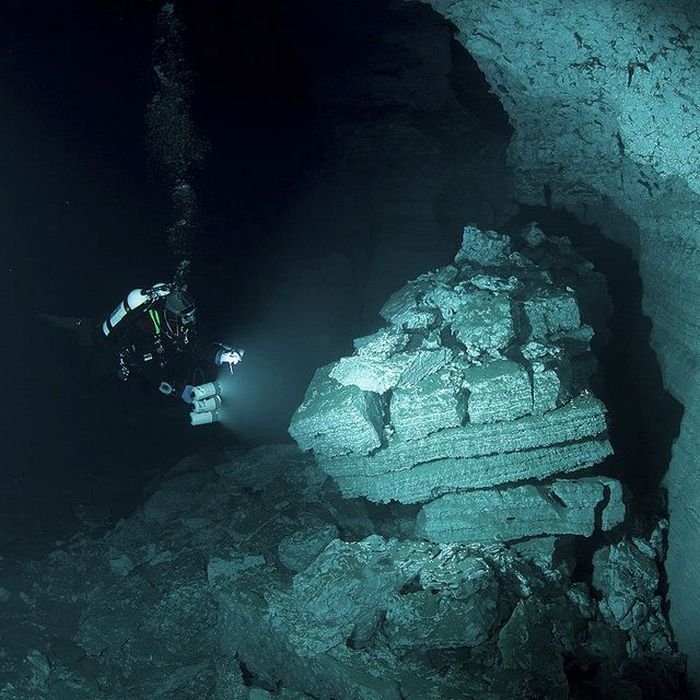Cave Diving
|
During the 1980s the Nullarbor Plain was recognized as a major cave-diving area, with one cave, Cocklebiddy, being explored for more than 6 kilometers, involving the use of large sleds to which were attached numerous diving cylinders and other paraphernalia, and which were then laboriously pushed through the cave by the divers. In more recent years divers have been utilizing compact diver-towing powered scooters, but the dive is still technically extremely challenging. A number of other very significant caves have also been discovered during the past 10 years or so; the 10+ (Lineal) kilometre long Tank Cave near Mount Gambier, other very large features on the Nullarbor and adjacent Roe Plain as well as a number of specific sites elsewhere, and nowadays the cave diving community utilizes many techniques, equipment and standards from the U.S. and elsewhere.
The CDAA is one of a number of organisations responsible for the administration of cave diving certification in Australia. Mixed-gas and rebreather technologies can now be used in many sites. All cave diving in the Mount Gambier area as well as at some New South Wales sites and the Nullarbor requires divers to be members of the CDAA, whether in the capacity of a visitor or a trained and assessed member.
|
|















